What Month Do You Stop Feeding Pond Fish?
Worried about your pond fish as winter approaches? Incorrect feeding can harm them. Learn the right time to stop feeding for healthy, happy fish this season.
Generally, you should stop feeding pond fish when water temperatures consistently drop below 10°C (50°F). This usually happens in late autumn or early winter, but the exact month varies by your location and the specific year's weather.
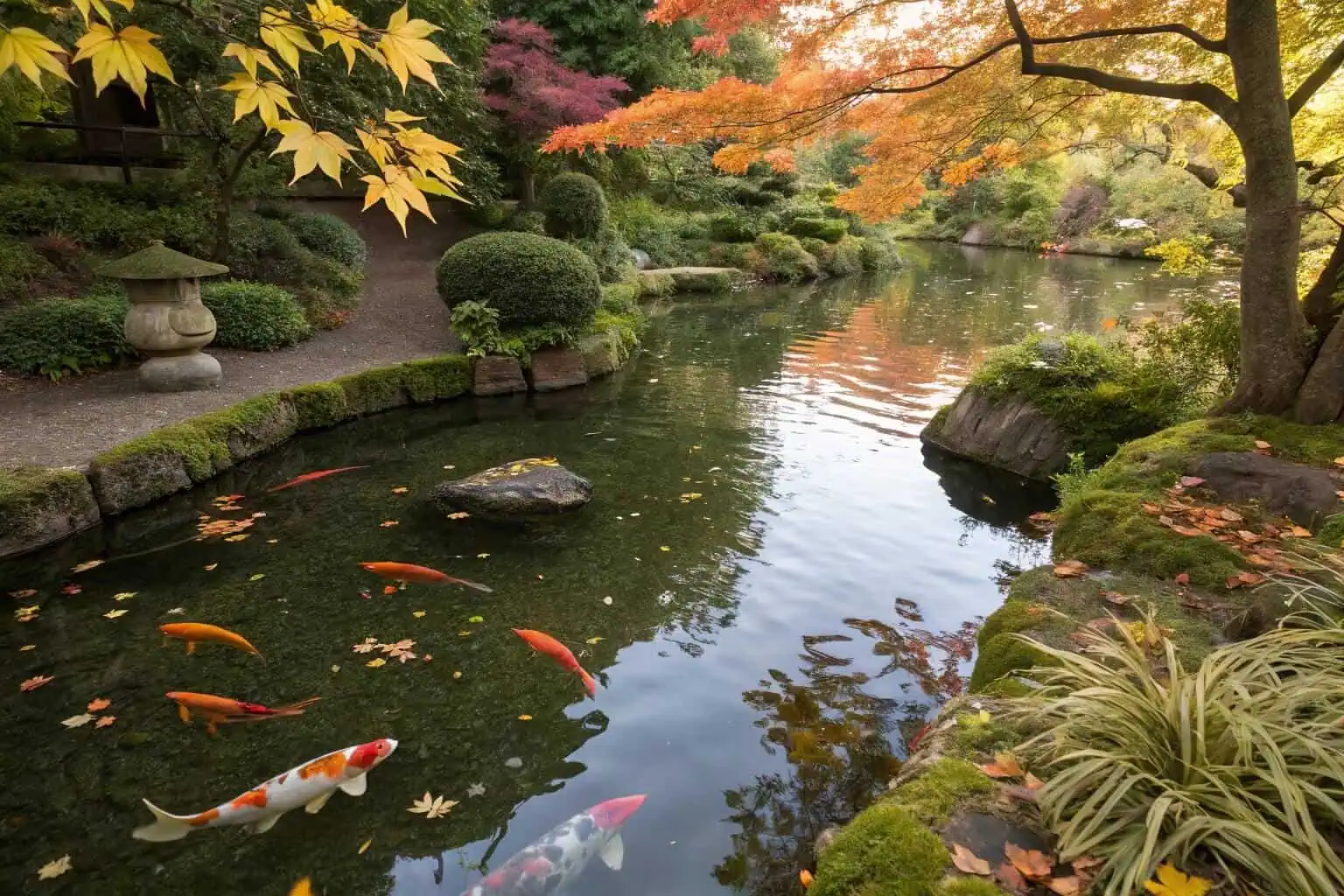
Understanding when to stop feeding is a cornerstone of good pond management, something I've learned over many years as a fish enthusiast. It's not just about a date on the calendar; it’s about observing your fish and their environment. At Bancy, where we craft solutions like our durable collapsible fish ponds, we know that creating the right habitat goes hand-in-hand with proper care like seasonal feeding. Let's explore how feeding needs to change as the seasons turn.
When to stop feeding a pond?
Confused about the exact signals for stopping pond feeding? Guessing can lead to unwell fish and a troubled pond. Let's pinpoint how your fish and their environment tell you it's time.
You should stop feeding your pond fish entirely when the water temperature consistently stays below 10°C (50°F). At this point, fish metabolism slows dramatically, and they can't digest food properly. Uneaten food will only pollute the water.
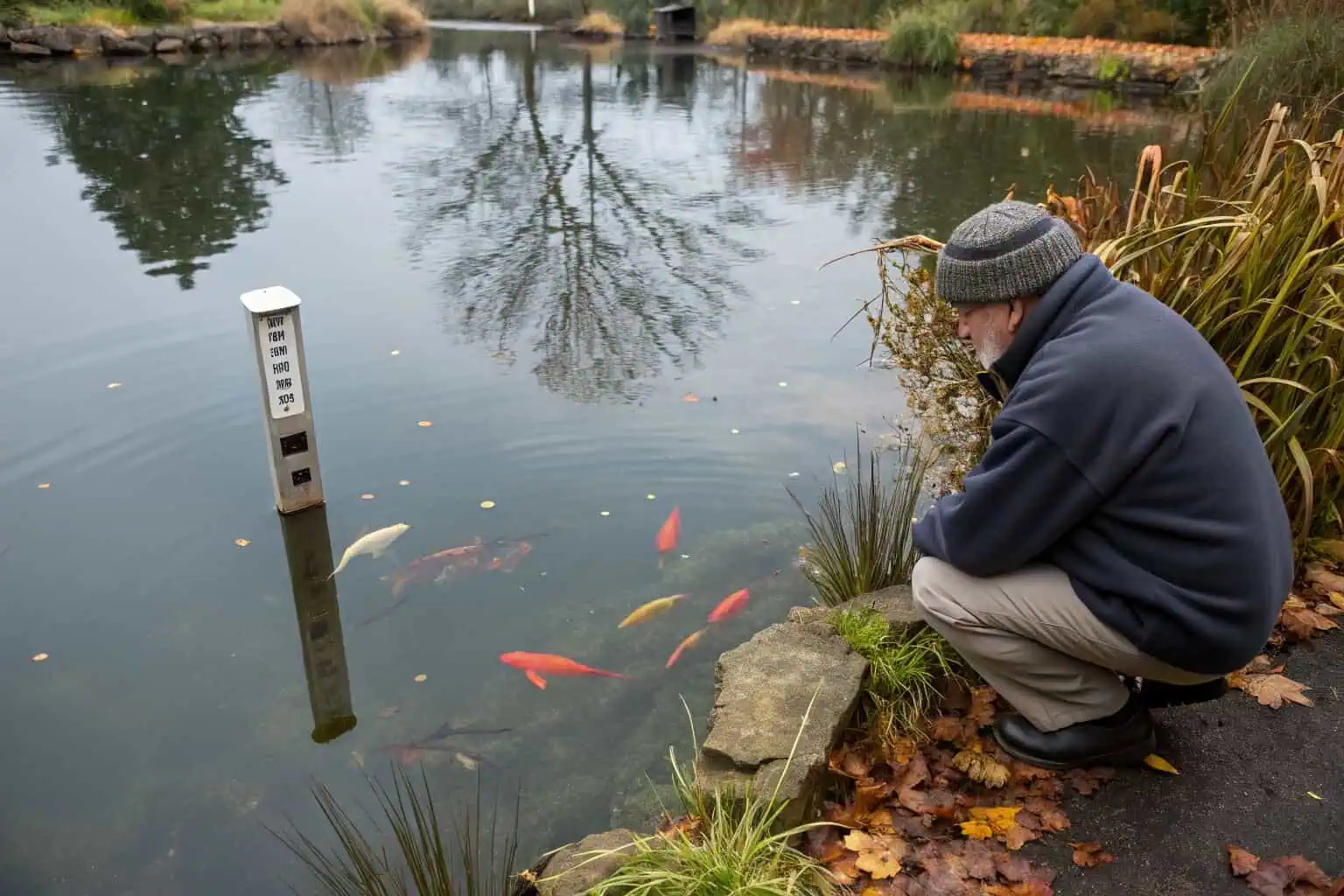
As a pond keeper, I've learned that water temperature is the most reliable guide. Instead of just picking a month, I always keep a good pond thermometer handy. I start reducing food in autumn as the water cools, and once it's consistently under that 10°C mark, feeding stops completely1. It's fascinating how nature has equipped fish like koi and goldfish to handle the cold by slowing down.
Watching the Thermometer, Not Just the Calendar
Your primary guide for stopping feeding should be a reliable pond thermometer2. Fish are cold-blooded, so their metabolism is directly tied to water temperature. While a general month like October or November is often cited in many regions, an unusually warm autumn or an early cold snap can shift this timing significantly. I make it a habit to check the water temperature3 daily once autumn begins.
Observing Fish Behavior as a Key Indicator
Fish will also give you clues. As the water cools, you'll notice they become less active and less interested in food. If they are sluggish and ignore pellets, they are telling you their bodies are preparing for winter. Forcing food on them at this stage can cause more harm than good, leading to digestive issues and stress. I always say, trust your fish; they know what they need.
Gradual Reduction is Key
Don't stop feeding abruptly. It's better to gradually reduce the amount and frequency of feeding as the water temperature drops from around 15°C (59°F) down to 10°C (50°F). Switch to a lower-protein, easily digestible wheat-germ-based food4 during this transitional period. This helps their systems adjust.
| Water Temperature Range | Feeding Action | Food Type Recommendation |
|---|---|---|
| Above 15°C (59°F) | Regular feeding | High-protein growth food |
| 10°C - 15°C (50°F - 59°F) | Reduce frequency and amount | Wheat-germ based food |
| Consistently below 10°C (50°F) | Stop feeding completely | No food |
| Below 8°C (46°F) | Absolutely no feeding; fish are likely in torpor | No food |
This structured approach helps ensure your fish transition smoothly into their winter dormancy. Remember, uneaten food decays and harms water quality, which is especially critical when fish are vulnerable in cold water.
Do you feed pond fish in summer?
Summer's here, and your fish seem to be always active and hungry. But are you feeding them correctly? Overfeeding or underfeeding can be a real issue for their health and your pond's balance.
Yes, you absolutely feed pond fish in summer. This is their main growing season. They are most active and have high metabolic rates during warmer months, requiring regular, nutritious food for energy and development.
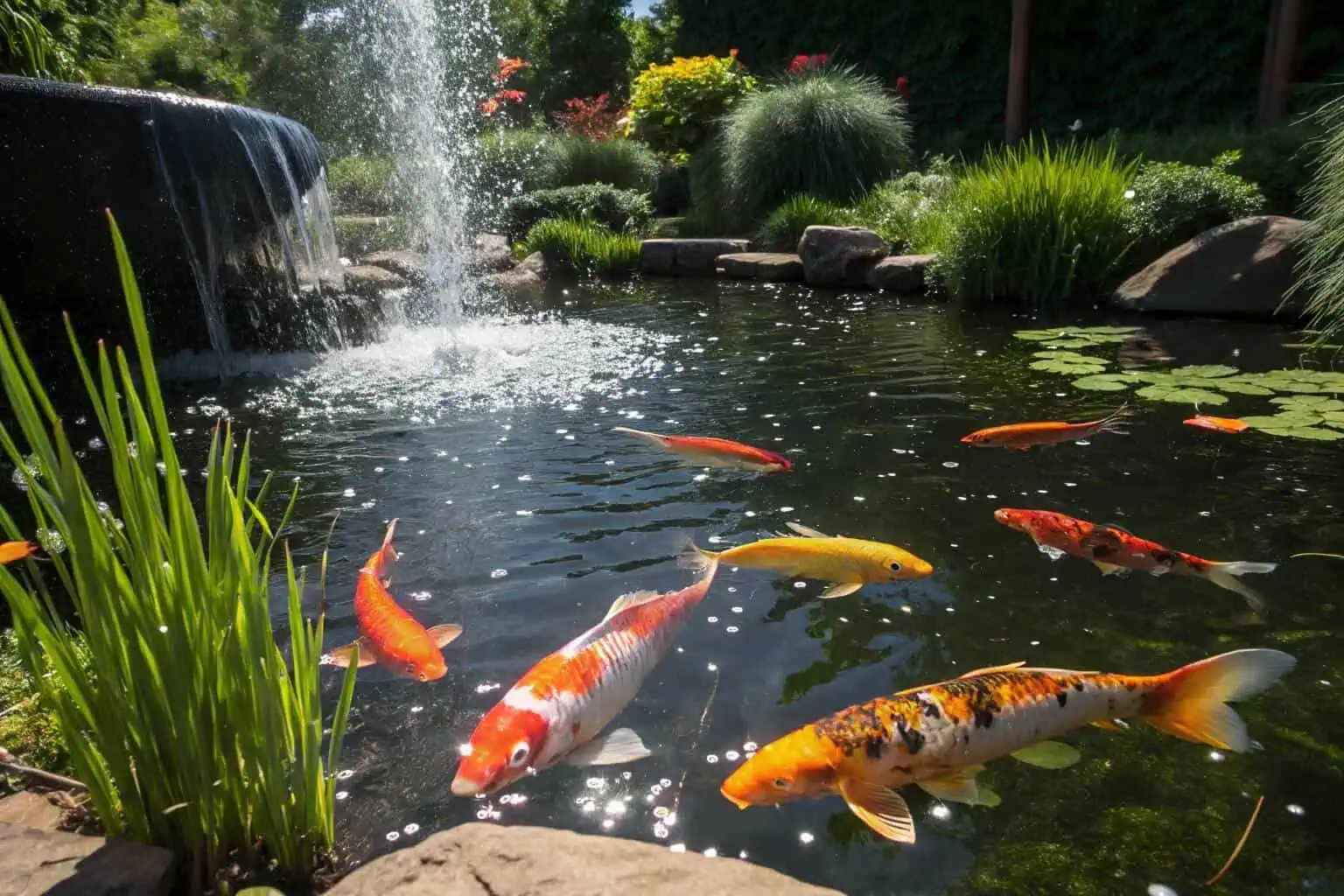
I always look forward to summer with my ponds. The fish are vibrant, active, and it's a joy to see them thrive. My experience, and what we advise at Bancy when customers ask about maintaining fish in our collapsible ponds, is that summer feeding5 is crucial for their growth and vitality. The key is to provide the right amount of quality food6 without overdoing it.
Summer: Peak Growth and Activity
Summer is when water temperatures are typically above 20°C (68°F), and this is when your pond fish7, like koi and goldfish, are at their most active. Their metabolism is high, they digest food quickly, and they convert that food into growth and energy. This is the time to support them with good nutrition. I often see my fish become much more interactive, coming to the surface readily for food.
What and How Much to Feed
During summer, you can feed your fish two to four times a day. Offer a high-protein, good-quality fish food pellet or stick8. The important rule is to only give them what they can consume eagerly within about 3 to 5 minutes. If there's food left floating after this time, you're overfeeding. Scoop out any excess to prevent it from decaying and fouling the water. I've found that smaller, more frequent feedings are often better than one large dump of food.
Monitoring Water Quality
Increased feeding in summer means more waste. It's vital to keep an eye on your water quality9. Ensure your pond filter is working efficiently and perform regular partial water changes if needed. Good aeration is also very important in warmer water, as it holds less dissolved oxygen. Healthy fish in summer depend on a combination of good food and a clean environment.
| Aspect | Summer Feeding Guideline | Why It's Important |
|---|---|---|
| Frequency | 2-4 times per day | Supports high metabolism and active growth. |
| Amount | What they consume in 3-5 minutes | Prevents overfeeding and water pollution. |
| Food Type | High-quality, higher protein pellets/sticks | Provides necessary nutrients for growth and energy. |
| Observation | Watch for uneaten food and remove it. | Maintains water quality. |
| Water Care | Ensure good filtration and aeration, monitor parameters. | Manages increased waste and oxygen demand. |
By following these guidelines, you can help your fish make the most of the summer months, ensuring they are strong and healthy as they head towards autumn.
Can you leave fish in a pond over winter?
Winter is approaching, and you might be wondering if your beloved pond fish can survive the cold outside. Leaving them unprepared in a harsh winter is a definite risk you want to avoid.
Yes, many common pond fish, such as koi and goldfish, are hardy and can be left in a pond over winter. The key conditions are that the pond must be deep enough not to freeze solid and you must take steps to maintain oxygen levels.
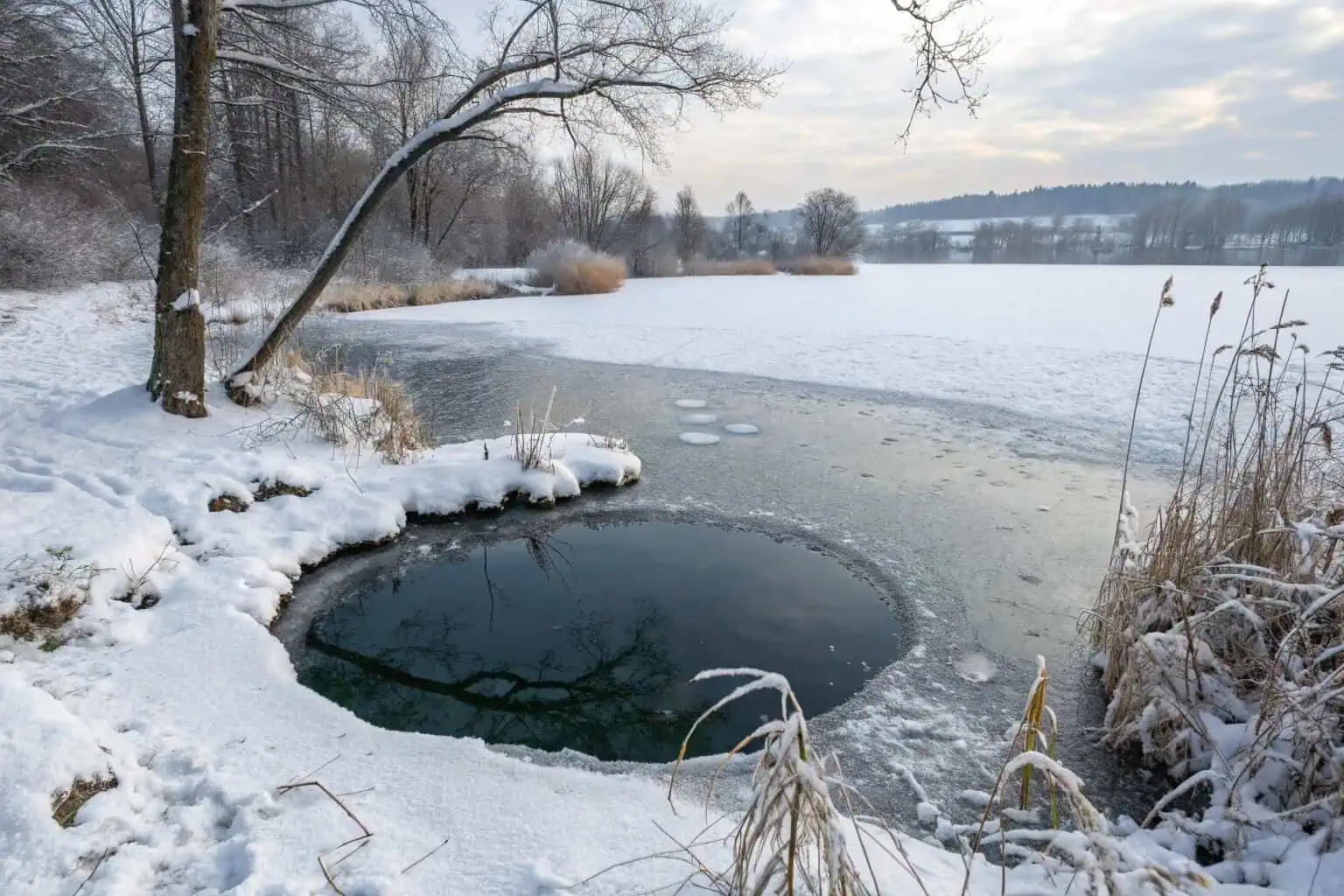
As someone who has managed ponds through many winters, I can assure you it's possible. The first winter I had a pond, I was quite nervous, but with the right preparation, my fish came through just fine. It's all about understanding their needs in cold weather. Even with our Bancy collapsible fish ponds10, which are designed for versatility, ensuring adequate depth for overwintering in colder climates is a discussion we have with customers.
Preparing Your Pond for Winter Residents
The ideal pond depth for overwintering fish11 is at least 2 feet (about 60 cm), preferably deeper in very cold climates. This provides an unfrozen water zone at the bottom where fish can safely rest. Before winter sets in, clean out as much debris (leaves, sludge) as possible from the pond bottom. Decomposing organic matter consumes oxygen and releases harmful gases, which can be trapped under ice.
Fish Metabolism in Cold Water
As water temperatures drop below 10°C (50°F), fish enter a state of torpor, a kind of semi-hibernation. Their metabolism slows right down, they stop eating, and they conserve energy by staying relatively still at the warmest part of the pond, usually the bottom. They don't need food during this time; their bodies have stored enough reserves from summer and autumn feeding. I've seen my fish become very still, almost appearing lifeless, but this is normal winter behavior.
Maintaining Oxygen and Gas Exchange
Crucially, you must ensure a hole remains open in the ice if your pond freezes over. This allows harmful gases from decomposing matter to escape and fresh oxygen to enter. A pond de-icer12 or an aerator/pond pump (run carefully to avoid super-cooling the deeper water) can achieve this. Never smash a hole in the ice, as the shockwaves can harm or kill your fish.
| Preparation Step | Action to Take | Reason |
|---|---|---|
| Depth Check | Ensure pond is at least 2 feet deep, ideally more. | Provides an unfrozen zone for fish. |
| Autumn Clean-up | Remove fallen leaves, dead plants, and excess sludge. | Reduces decomposing matter that consumes oxygen and releases bad gases. |
| Equipment Check | Install a pond de-icer or ensure an aerator can maintain an open water area. | Essential for gas exchange if the pond surface freezes. |
| Stop Feeding | Cease all feeding when water is consistently below 10°C (50°F). | Fish cannot digest food in cold water. |
| Netting (Optional) | Cover pond with netting in autumn. | Prevents leaves from falling in and decomposing. |
With these preparations, your fish have a very good chance of surviving winter comfortably and emerging healthy in spring.
At what water temperature should I stop feeding my pond fish?
You're keen to get it right, but still a bit unsure about that exact temperature cutoff for feeding? Getting this wrong by even a few degrees consistently can make a big difference to your fish's health during the cold months.
You should completely stop feeding your pond fish when the water temperature consistently stays below 10°C (50°F). Below this critical point, their digestive systems effectively shut down, and feeding can become harmful rather than helpful.
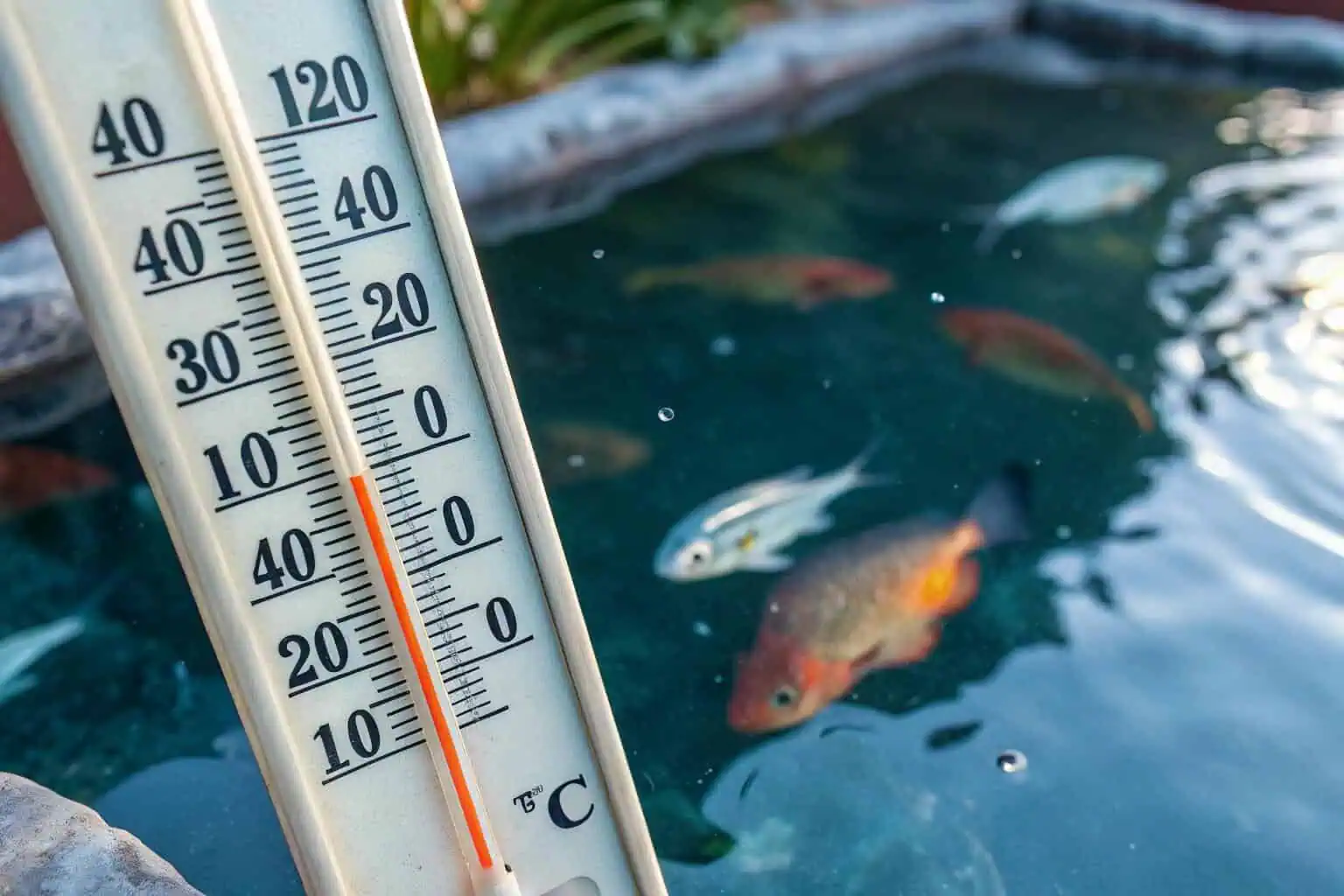
This 10°C (50°F)13 mark is something I emphasize constantly to fellow pond enthusiasts. I remember an early mistake where I continued light feeding into a cold snap, thinking a little food wouldn't hurt. I learned the hard way that undigested food can cause serious internal problems for fish in cold water. Since then, my pond thermometer14 is my best friend in autumn.
The Critical 10°C (50°F) Threshold
This temperature isn't arbitrary. For most common pond fish like koi and goldfish, 10°C (50°F) is the point where their metabolic processes15 slow down so much that they can no longer efficiently digest food. Their bodies are preparing for winter dormancy. Continuing to offer food, even if they seem to nibble, is ill-advised.
Why Feeding Below This Temperature is Harmful
When fish ingest food in water colder than 10°C, it can sit undigested in their gut. This undigested food can then start to decay internally, leading to bacterial infections16, bloating, and other serious health issues. It also puts unnecessary stress on their already slowed systems. Furthermore, any uneaten food will decay in the pond, contributing to poor water quality17 at a time when the natural ecosystem processes are also slowed. My insight has always been that it’s far safer for fish to go without food in cold water than to be fed inappropriately.
Adjusting for Different Fish Types
While 10°C (50°F) is a good general rule, some fish species might have slightly different tolerances. However, for the common backyard pond fish like goldfish and koi, this temperature is a reliable indicator. Always observe your fish; if they are very inactive and show no interest in food even slightly above this temperature, it's wise to err on the side of caution and stop feeding.
| Water Temperature | Fish Digestion & Activity | Carlos's Feeding Rule | Potential Risk if Fed |
|---|---|---|---|
| Above 15°C (59°F) | Active, good digestion | Feed regularly (high protein in summer) | Low, if not overfed |
| 12-15°C (54-59°F) | Slowing down, reduced digestion | Reduce quantity, switch to wheat-germ | Mild digestive upset if overfed |
| 10-12°C (50-54°F) | Very slow, minimal digestion | Feed very sparingly, if at all (wheat-germ) | Increased risk of digestive issues |
| Consistently <10°C (50°F) | Digestive system largely inactive, torpid | STOP ALL FEEDING | High risk of internal issues, death |
| <8°C (46°F) | Dormant | Absolutely no food | Severe health problems, pollution |
Trust the thermometer and your fish's behavior. Protecting them through winter starts with knowing when to say "no more food until spring!"
Conclusion
Proper seasonal feeding is truly key to maintaining healthy, vibrant pond fish year-round. Observe your fish, monitor the water temperature carefully, and they will thrive. For quality pond solutions and advice, feel free to visit us at Bancy Solutions.
-
Knowing when to stop feeding your fish is crucial for their health, especially as temperatures drop in autumn. ↩
-
A reliable pond thermometer is essential for monitoring water temperature, ensuring your fish thrive during seasonal changes. ↩
-
Understanding the impact of water temperature on fish metabolism can help you make informed decisions for their care. ↩
-
Wheat-germ-based food is essential for fish during colder months. Discover its benefits and how it aids in their health. ↩
-
Explore this link to learn effective summer feeding strategies that ensure your pond fish thrive during the warm months. ↩
-
Find out about the best quality food options for pond fish to enhance their growth and energy levels. ↩
-
Discover essential tips for maintaining healthy pond fish during summer, ensuring their growth and vitality. ↩
-
Explore this link to understand how high-protein fish food can enhance your fish's health and growth, especially in summer. ↩
-
Learn effective strategies for maintaining water quality in your pond, crucial for the health of your fish during summer. ↩
-
Discover the versatility and advantages of Bancy collapsible fish ponds for winter management and fish care. ↩
-
Understanding the ideal pond depth is crucial for fish survival during winter. Explore this link to ensure your pond is properly prepared. ↩
-
A pond de-icer is essential for keeping water oxygenated in winter. Learn how it functions and its importance for fish health by checking this link. ↩
-
Understanding this temperature is crucial for the health of your pond fish, ensuring they thrive during colder months. ↩
-
A reliable pond thermometer is essential for maintaining optimal conditions for your fish, especially during seasonal changes. ↩
-
Learn how temperature affects fish metabolism to better care for your aquatic pets and maintain a healthy pond environment. ↩
-
Understanding bacterial infections in fish can help you prevent serious health issues in your aquatic pets. ↩
-
Exploring the impact of poor water quality can guide you in maintaining a healthy environment for your fish. ↩